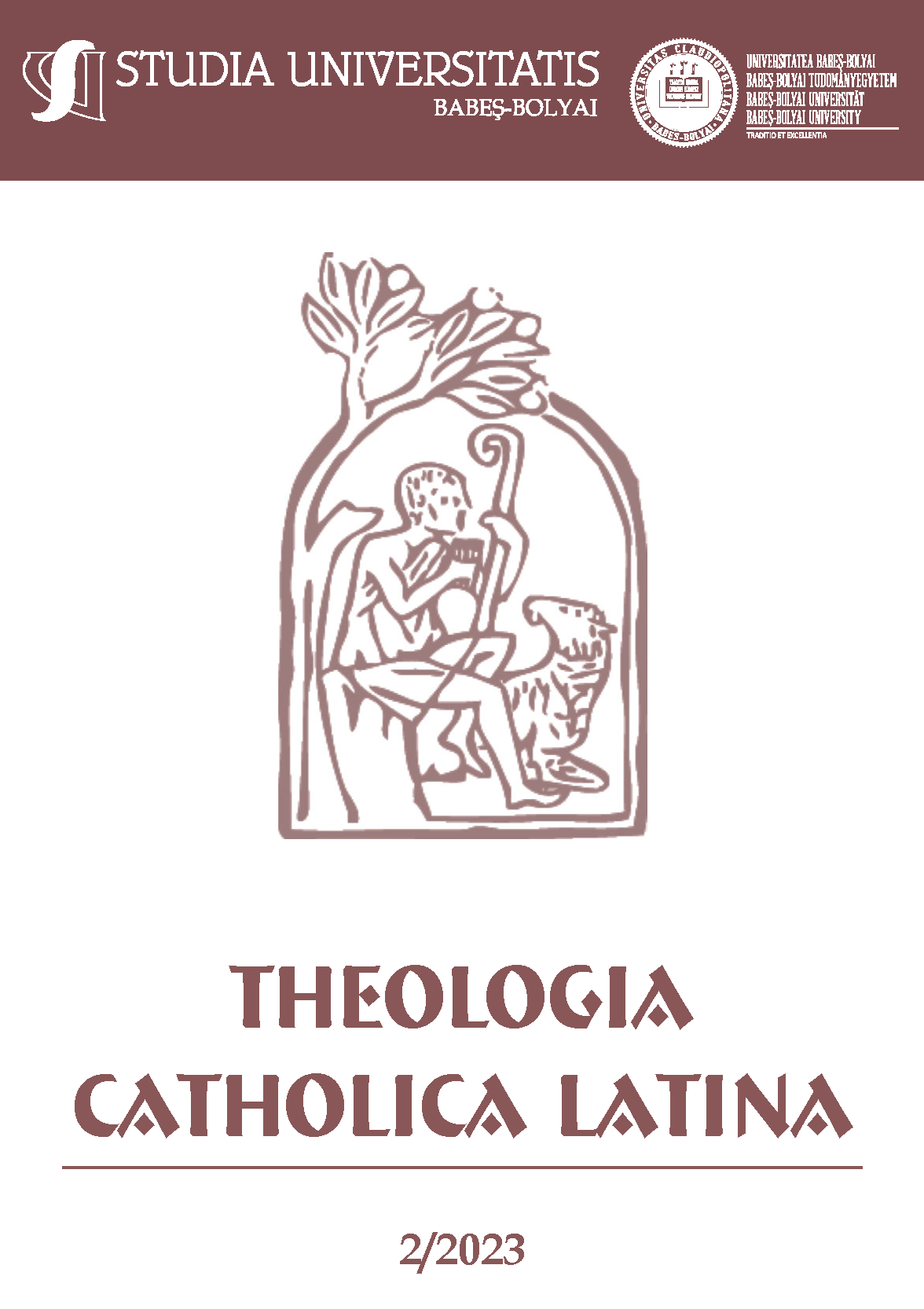Un SMS di San Anselmo a Maurizio sul male o il male nella lettera 97 di Anselmo d’Aosta
DOI:
https://doi.org/10.24193/theol.cath.latina.2023.LXVIII.2.05Keywords:
Anselm of Aosta, evil, nothing, epistolary, SMS, something, not-something, almost-somethingAbstract
The following article through Anselm of Aosta’s Letter 97 brings to the reader, the idea that Anselm’s epistolary today can be understood as virtual letters: SMS or messages on social networking sites. The theme of the Letter 97 presents evil not as something or not-something, but as almost something. With his itinerary, Anselm not only re-elaborated Augustine’s thought, but also opened the door for a new interpretation that after centuries, that is, today, becomes interesting because of its freedom and perspectives. By the means of language Anselm opens the horizon to the eyes of today’s reader that stretches to ontological perspective. In this sense, the evil that is almost-something opens an infinite possibility.
References
D’Aosta, Anselmo, Epistole, Lettere https://www.brepolsonline.net/doi/abs/10.1484/M.NUTRIX-EB.5.112923
D’AOSTA, Anselmo, Monologio e Proslogio, trad. Italo Sciuto, Milano: Bompiani, 2009
S. Anselmi Cantuariensis Archiepiscopi, Opera omnia, Vol III, Edinburgh: Thomam Nelson et Filios Constable, Giles, Letters and letter-collections, Turnhout: Brepols, 1976
Funaioli, Gino –Cardinali, Giuseppe, Epistulari, Scritture, in https://www.treccani.it/enciclopedia/scritture-epistolari_%28Enciclopedia-Italiana%29/ (13.11.2023.)
Ruzsiczky Éva, Szávai J., R., Magyar Larousse Enciklopédiai szótár, Vol. II, Paris– Budapest: Librairie Larousse–Akadémiai Kiadó, 1992
Almada, Christian Alejandro, Anselmo D’Aosta ed il genere epistolare, L’Ulivo, 37 (2007), Abbazia Monte Oliveto Maggiore: Monte Oliveto Maggiore
András, István, A rossz Cantrbury Anzelm felfogásában a De casu diavoli dialógus alapján, Studia Theologica Transsylvaniensia, Alba Iulia: Institutul Teologic Romano-Catolic, 16/2
András, István, A virtualizálódó szubjektum (helyzetjelentés; morfondírozás), in. Studia Theologica Transsylvaniensia, 17/2, Alba Iulia: Institutul Teologic Romano-Catolic 325‒341
Biffi, Inos, Anselmo al Bec. Amabilità e rettitudine di un monaco riuscito, in Anselmo d’Aosta, Lettere, Vol I., cura Inos Biffi–Costante Marabelli, Milano: 1988
CAMPBEL, Richard, Anselm’s Background Metaphysics, The Scottish Journal of Theology 33 (1980), Cambridge: Cambridge University Press, 317-145
Chanu, Ghatto, Anselmo D’Aosta, Milano: San Paolo, 2009
Esterházy, Péter, 1 Norfolk, in. A szabadság nehéz mámora, Budapest: Magvető, 2003 GENTILE, L., Il problema del male in Anselmo d’Aosta, in ed. Giuseppe Fidelibus, Agostino non è (il) male, Chieti: Edicola, 1998
Granata, Alfredo, L’epistolario anselmiano: un monumento di vita e di letteratura, in Anselmo d’Aosta Lettere 3, ed. I. Biffi–C. Marabelli, 1988
Henry, Desmond Paul, Saint Anselmo and Nothingness, Philosophical Quarterly, Oxford: Oxford University Press, 15 (1965), 243–246
Lari, Ovidio, La chiesa di Aosta e Sant’Anselmo, in Anselmo d’Aosta, Lettere, Vol I. ed. I. Biffi–C. Marabelli, Milano 1988
Palmeri, Pietro, Voluntas e rectitudo nella riflessione etico-filosofica di Anslemo d’Aosta, Palermo: Officina di studi medievali, 2009
Schmitt, F.S. Zur Chronologie der Werke des hl Anselm von Canterbury, Revu Bènèdictine 44 (1932), Turnhout: Brepols
SCIUTO, Italo, Il libero arbitrio nel pensiero medievale, in La libertà del bene, ed. Milano: C. Vigna, 1998
SCIUTO, Italo, La semantica del nulla in Anselmo d’Aosta, Medioevo, XV (1989), Padova: Università di Padova, 42–45
Simón, Alfredo, Caritatis pace et amore veritatis. L’esperienza di Dio nell’epistolario di Anselmo D’Aosta, Benedictina, 56 (2009), Cesena: Centro Storico Benedittino Italiano Tonelli, Guido, Il sogno di uccidere Chrònos, Milano: Feltrinelli, 2021.
Downloads
Published
How to Cite
Issue
Section
License
Copyright (c) 2023 Studia Universitatis Babeș-Bolyai Theologia Catholica Latina

This work is licensed under a Creative Commons Attribution-NonCommercial-NoDerivatives 4.0 International License.



